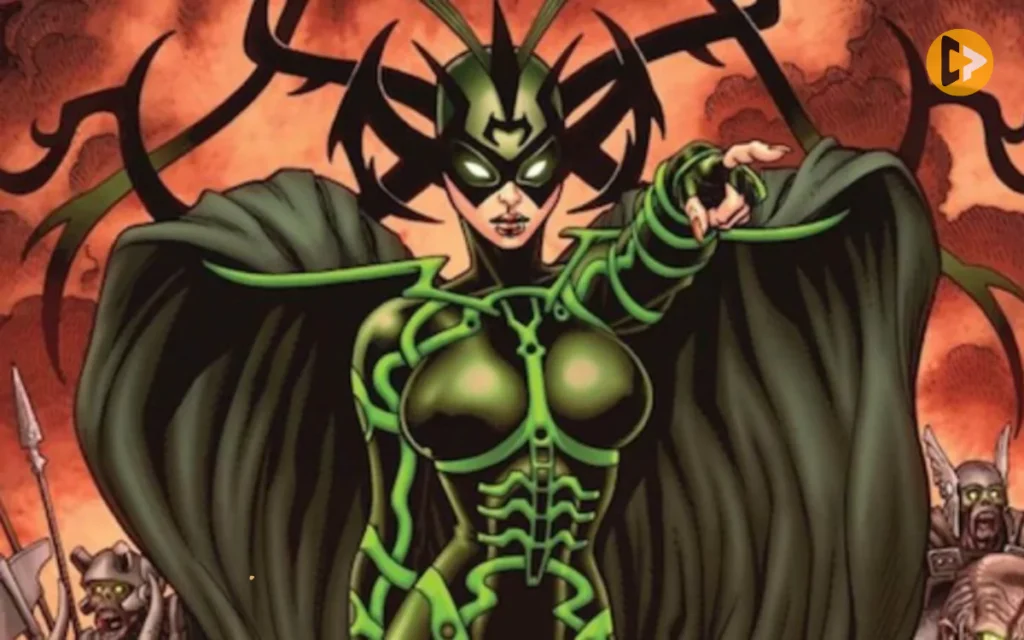Yo, Marvel fans and mythology enthusiasts! Ever wonder about the badass dark goddess who’s been giving Thor and the rest of Asgard a hard time?
Yeah, I’m talking about Hela – the Goddess of Death herself, draped in that iconic, spiky antler helmet and exuding vibes that scream, “Don’t mess with me.” But where did she come from? What’s her story? It’s time to dive deep into the origin of Hela, the ruler of Hel and Niflheim, and uncover the layers behind this fascinating character who straddles the line between myth and Marvel madness.
Key Takeaways
Hela’s intriguing backstory isn’t just cooked up in the Marvel Studios; it’s got roots deep in Norse mythology. She’s the daughter of Loki (yes, the god of mischief) and rules over the dead. But Marvel took some liberties, giving us a version that’s both terrifying and captivating.
Her powers are off the charts; from soul manipulation to wielding vast dark magics, Hela is not someone you want as an enemy. Understanding her abilities gives us insight into why she’s one of Thor’s most formidable foes.
She’s had some epic storylines both in comics and on the big screen. From attempts to take over Asgard to battling it out with the biggest names in Marvel, Hela’s tales are rich with conflict, power struggles, and the occasional alliance.
Hela’s portrayal by Cate Blanchett in Thor: Ragnarok brought a new level of badassery to the character, earning her a spot as one of the MCU’s most memorable villains. Her impact on the storyline and character development within the universe was profound.
Her legacy goes beyond the villain trope, exploring themes of power, death, and what it means to rule. Hela’s character development offers depth that resonates with fans and keeps us hooked on her every move.
The Norse Mythology Connection
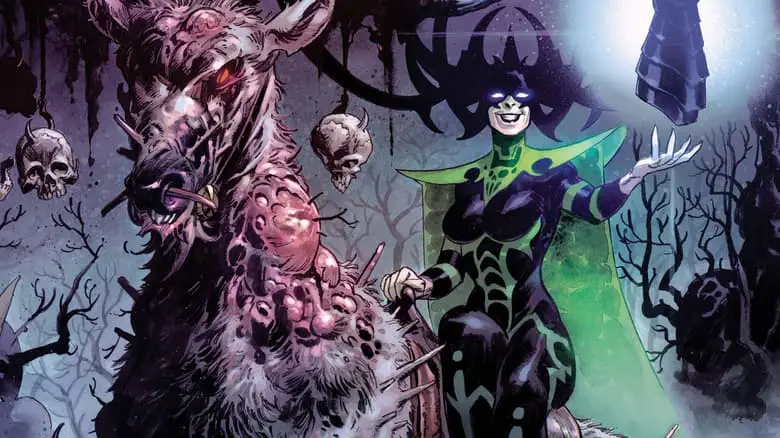
When we talk about the origin of Hela, it’s like opening a book filled with ancient myths, epic battles, and the deep, dark corners of the afterlife. In Norse mythology, Hela (or Hel) is known as the goddess who rules over the realm of the same name, where she oversees the dead who aren’t lucky enough to make it to Valhalla or Fólkvangr.
Half of her body is alive and vibrant, while the other half is dead and decaying. Talk about having a split personality, right? This duality represents the stark contrast between life and death, a theme that’s central to understanding her character.
Marvel, in its typical fashion, took some creative liberties with Hela’s story. Instead of being Loki‘s daughter, she became a sort of adopted daughter to Odin, serving as the Asgardian Goddess of Death. This twist adds a layer of complexity to her relationships within the Asgardian royal family, making her battles against Thor and the gang all the more personal and dramatic.
Hela’s Creation in Marvel Comics

Flash forward to the swinging ’60s, and Marvel decides it’s time to introduce a new villain to the scene. Enter Hela, created by the legendary duo Stan Lee and Jack Kirby.
She made her grand debut in “Journey into Mystery” #102, where she was depicted as a formidable foe with ambitions of ruling over the dead. But it wasn’t just about expanding her domain Hela’s character was a way to explore themes of mortality, power, and what lies beyond death, setting her apart from your run-of-the-mill villain.
Over the years, Hela’s character has evolved. She’s gone from a straightforward antagonist to a complex figure with her own motivations, often finding herself in morally gray areas. This evolution reflects the depth of Marvel’s storytelling and its ability to adapt and grow its characters beyond their origins.
Powers and Abilities A Goddess to Fear
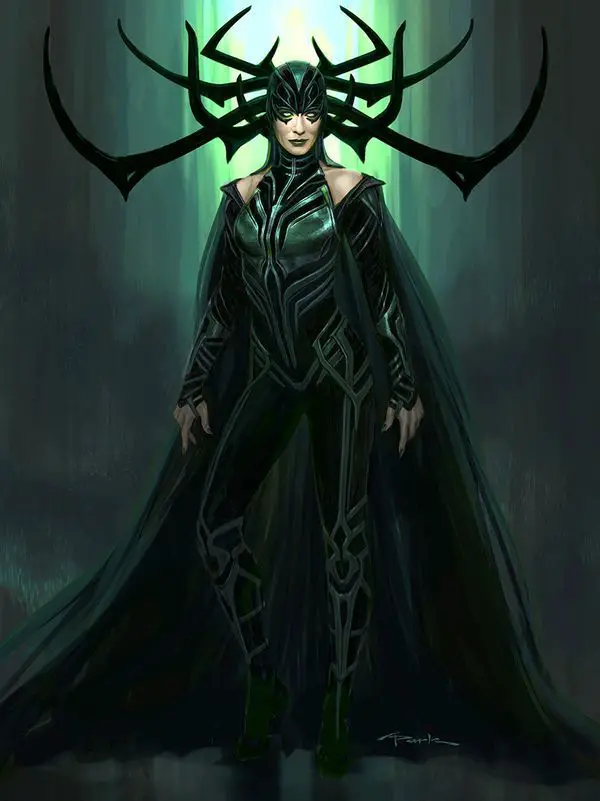
Now, let’s talk about what makes Hela truly terrifying her powers. We’re not just talking about your standard-issue super strength and durability here. Hela has control over life and death itself. She can kill with a touch, resurrect the dead, and command legions of the fallen. And if that’s not enough, she’s also got magic that rivals some of the most powerful beings in the Marvel Universe.
Hela’s most iconic ability, though, has to be her Necroswords. These blades can cut through virtually anything and are a symbol of her dominion over death. Combine that with her ability to manipulate vast areas of space and create illusions, and you’ve got a goddess who’s not just a physical threat but a master of psychological warfare.
Significant Storylines Featuring Hela
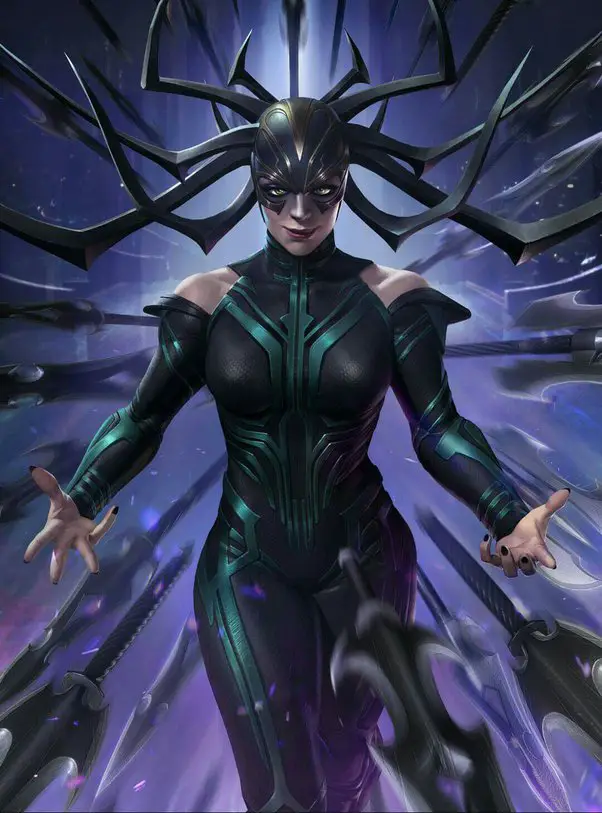
When it comes to causing trouble and stirring the pot, Hela’s got a resume that would make even the most seasoned villains take a step back. Her penchant for invasion and domination has placed her at the heart of some of Marvel’s most epic storylines.
Take, for example, the “Ragnarok” story arc, where Hela plays a pivotal role in the destruction and rebirth of Asgard. It’s here that her ambitions come to the forefront, challenging Thor and his allies to their very limits.
Then there’s her role in the “Death of Odin” arc, where her powers and strategic mind are on full display. Hela’s ability to navigate the complex politics of Asgard and the various realms, all while pursuing her own agenda, showcases her as a multidimensional antagonist.
These storylines don’t just serve as backdrops for her ambitions; they also provide depth to her character, revealing her motivations, strengths, and vulnerabilities.
Hela in Thor Ragnarok – A Cinematic Perspective
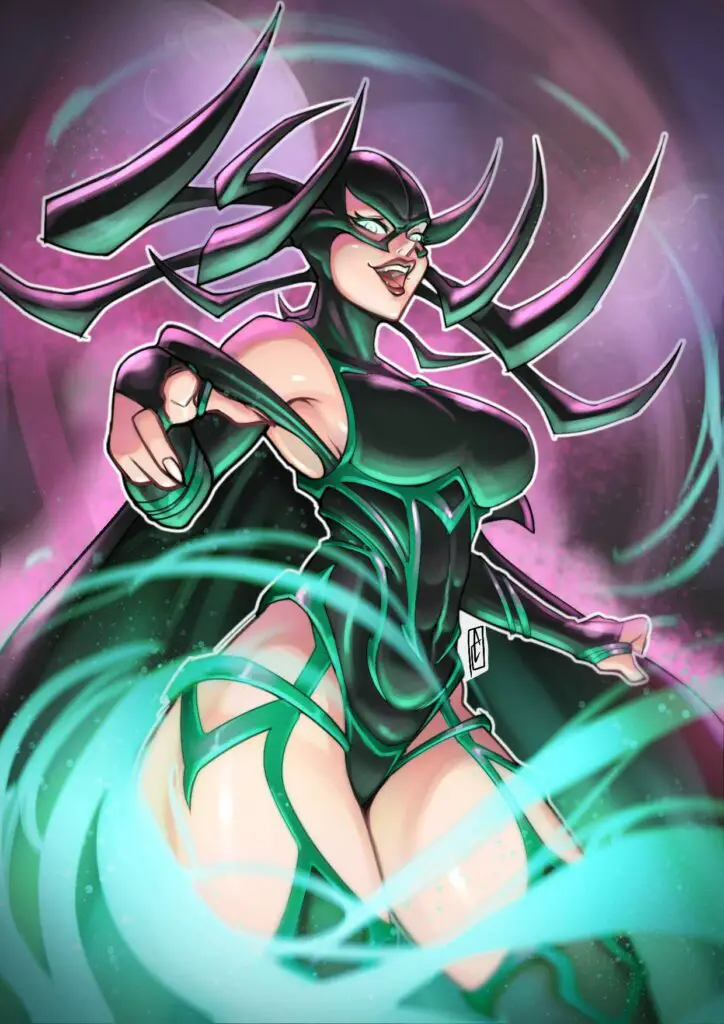
The Marvel Cinematic Universe (MCU) brought Hela to life in a way that both comic fans and newcomers could appreciate. Portrayed by Cate Blanchett in “Thor: Ragnarok,” Hela’s charisma, power, and ruthlessness were front and center.
This portrayal not only introduced her to a wider audience but also gave her character new dimensions. Blanchett’s Hela was not just a villain to be defeated; she was a force of nature, challenging Thor’s beliefs and forcing him to grow.
Her impact on the MCU was significant. “Thor: Ragnarok” marked a turning point for Thor’s character, partly thanks to Hela’s role as the catalyst for change. The destruction of Mjolnir, the revelation of Asgard’s dark past, and the eventual destruction of Asgard itself were all tied to her. Hela’s presence elevated the stakes and provided a compelling narrative that resonated with audiences.
The Legacy of Hela: Impact and Influence
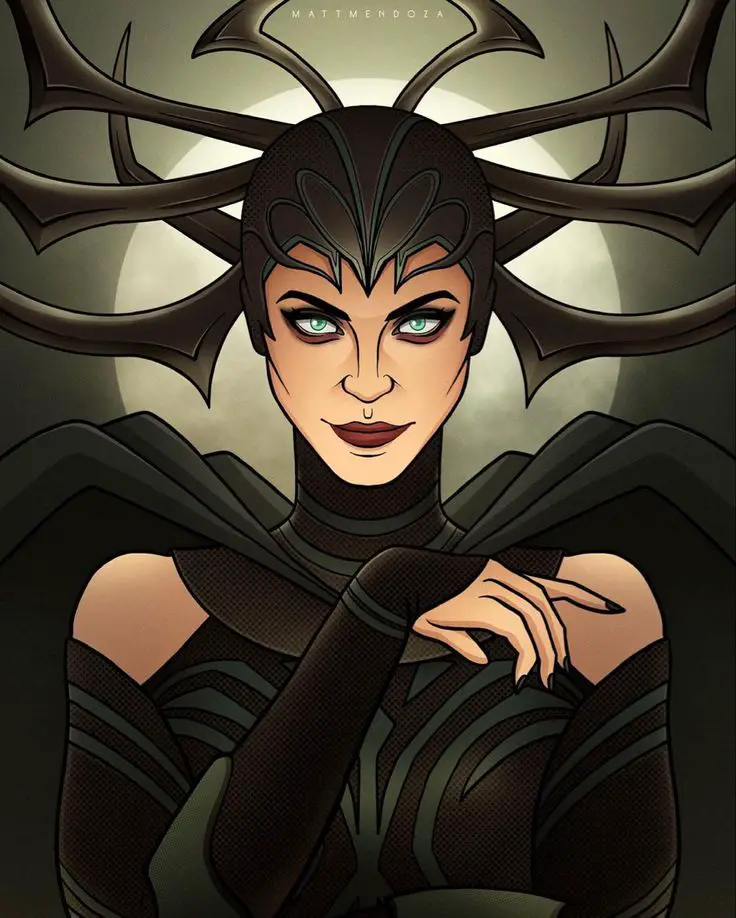
Hela’s legacy extends beyond her actions within the storylines. As a character, she represents themes of power, death, and rebirth—themes that are universal and timeless. Her impact is felt not just in the realm of Asgard but also among the fans and creators who have embraced her as a symbol of strength and complexity.
Hela has influenced not only the direction of Marvel’s storytelling but also its approach to female villains. She paved the way for characters who are not just evil for the sake of it but are complex individuals with their own stories, ambitions, and reasons. This has opened up discussions about gender, power, and morality in a genre that continues to evolve.
Furthermore, Hela’s character challenges us to consider the nature of legacy and the impact one leaves behind. In a universe filled with heroes striving to do good, Hela reminds us that the line between hero and villain can be blurred and that even in darkness, there can be depth and motivation.
Conclusion
Hela, the Goddess of Death, weaves a tale of power, ambition, and complexity that stretches from the mythical realms of Norse mythology to the vibrant panels of Marvel comics and the dynamic storytelling of the Marvel Cinematic Universe.
Her journey from the cold depths of Hel to the forefront of Asgard’s most cataclysmic events showcases not just a villain, but a force of nature whose legacy is marked by both destruction and the inevitable cycle of rebirth.
Hela’s story challenges us to explore the darker aspects of power and legacy, reminding us that even in the darkest of characters, there’s a depth and motivation that resonates deeply with the human experience.
Who created Hela in the Marvel Universe?
Stan Lee and Jack Kirby introduced Hela to the Marvel Universe in “Journey into Mystery” #102, showcasing her as the Asgardian Goddess of Death.
What are Hela’s most significant powers?
Hela possesses incredible strength, durability, and control over life and death. Her ability to manipulate souls, wield dark magic, and her mastery of necromancy make her one of the most formidable beings in the Marvel Universe.
How does Hela’s role in Norse mythology differ from Marvel’s adaptation?
In Norse mythology, Hela is portrayed as the ruler of the underworld, Hel, and is depicted as being half alive and half dead. Marvel’s adaptation gives her a more active role as the Goddess of Death, involving her directly in the affairs of Asgard and its denizens.
What are some key comic arcs where Hela plays a vital role?
Hela has been central to several key storylines, including “Ragnarok,” where she seeks to bring about the end of Asgard, and the “Death of Odin,” where her powers and ambitions come to the forefront.
How was Hela’s character received in Thor: Ragnarok?
Cate Blanchett’s portrayal of Hela in “Thor: Ragnarok” was widely praised for adding depth to the character and presenting her as a formidable and charismatic villain, earning her a spot as one of the most memorable antagonists in the MCU.

